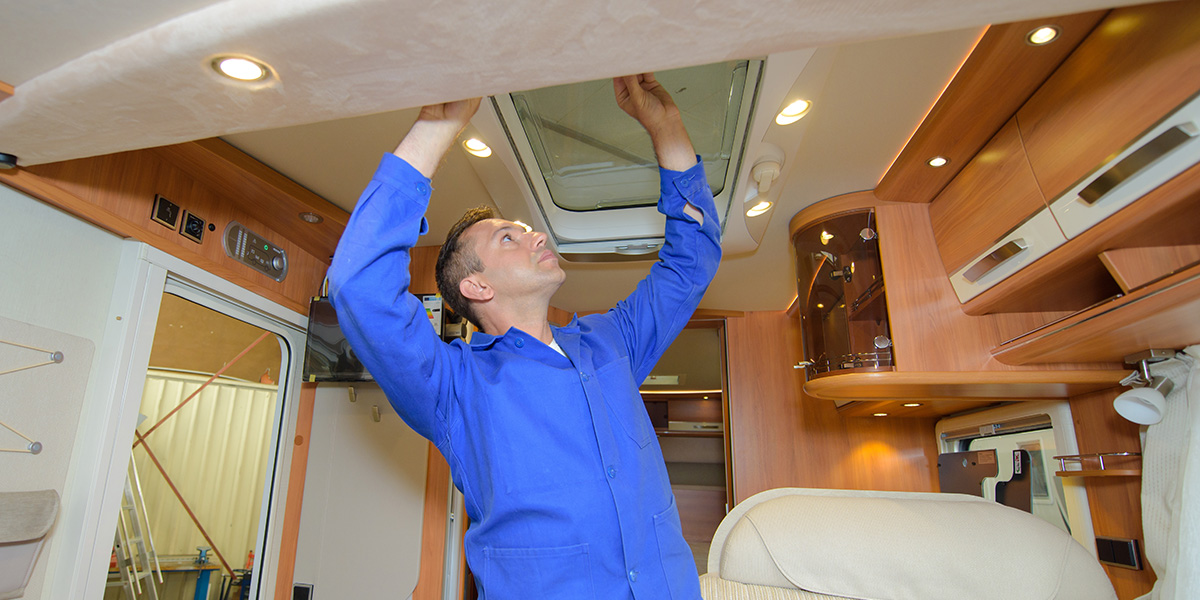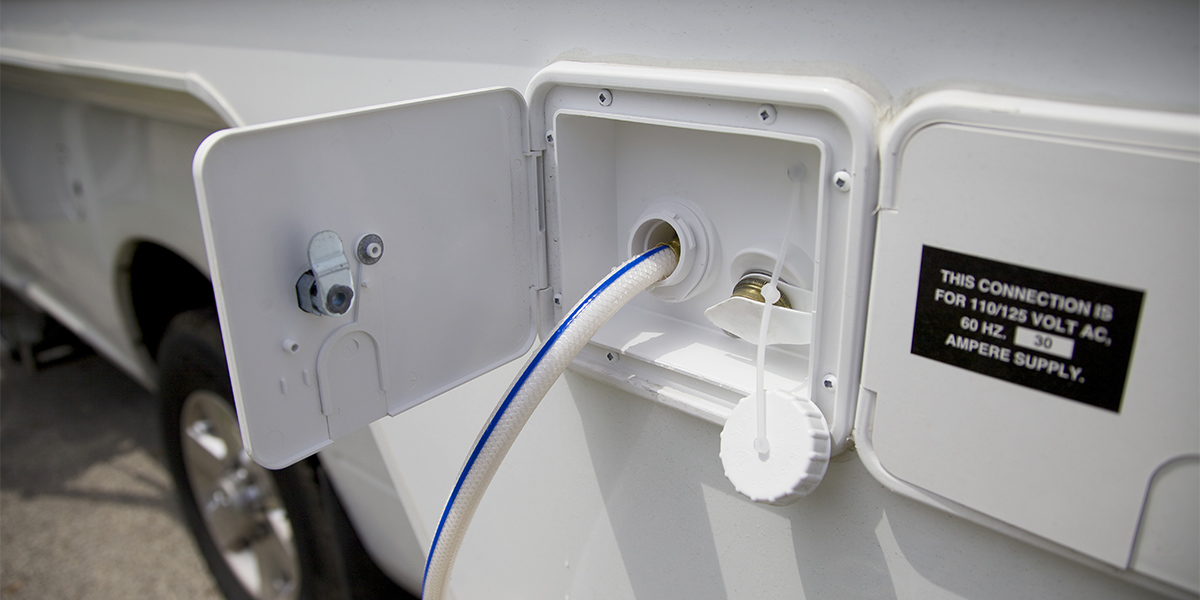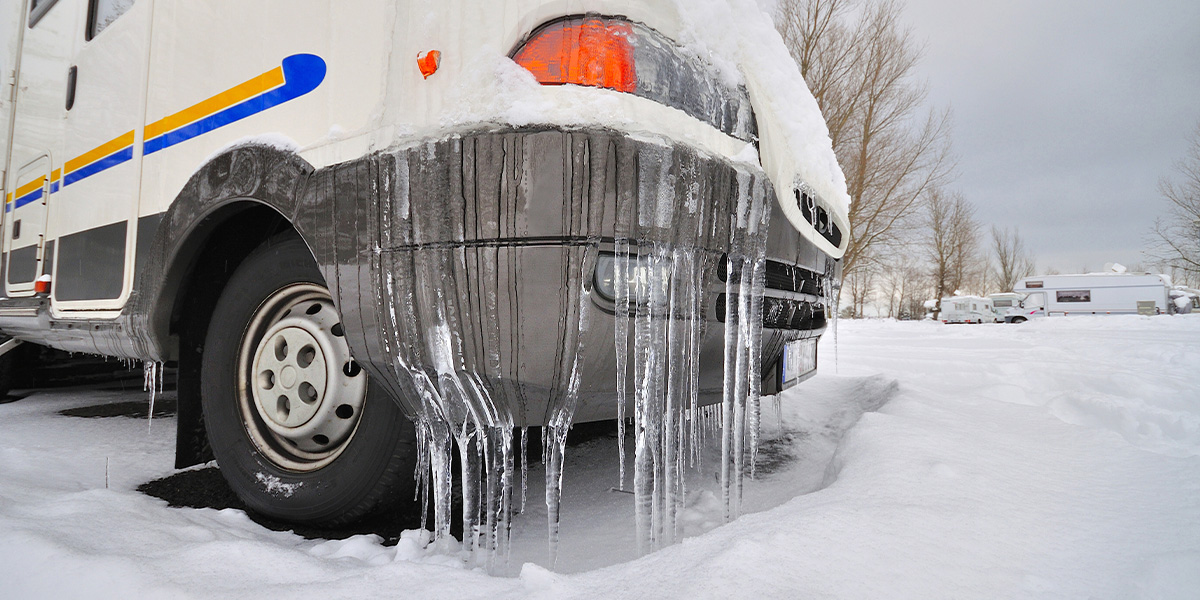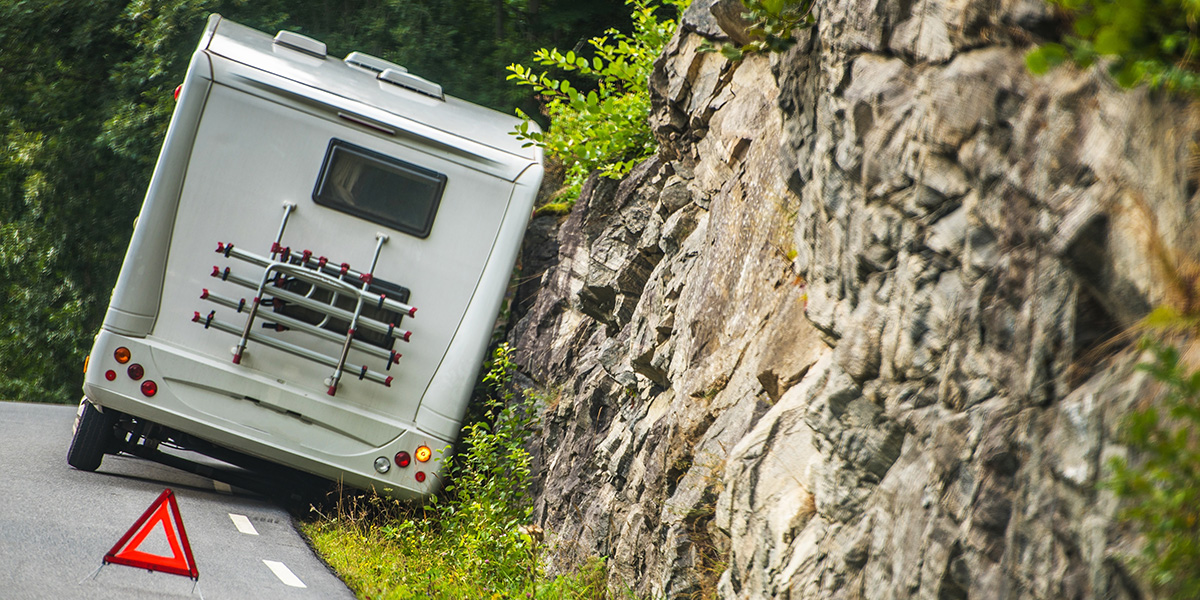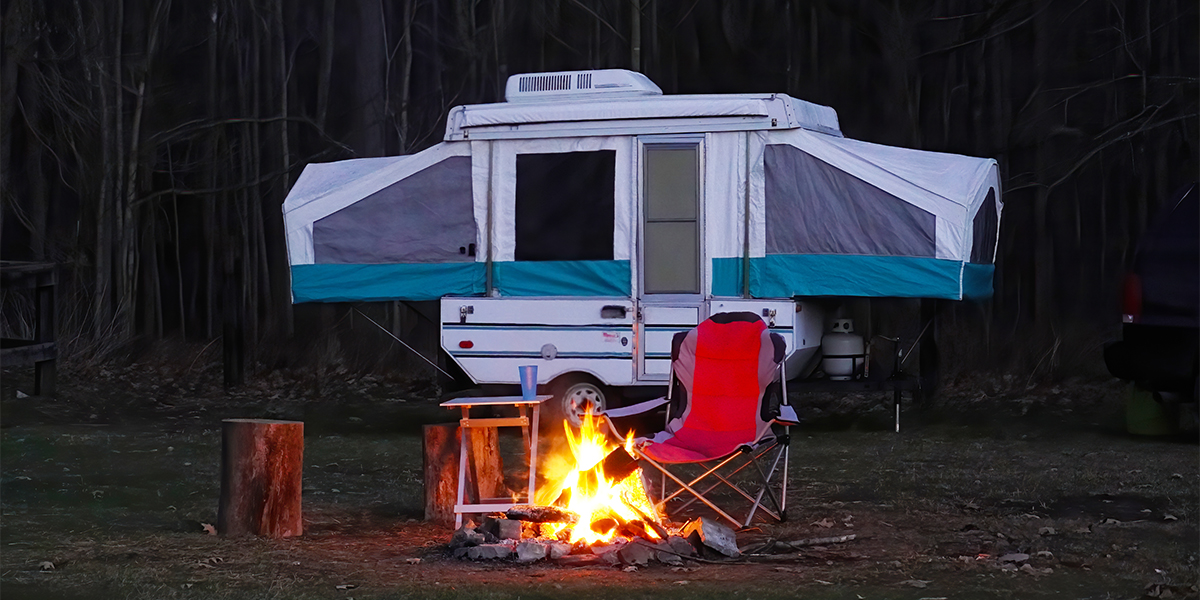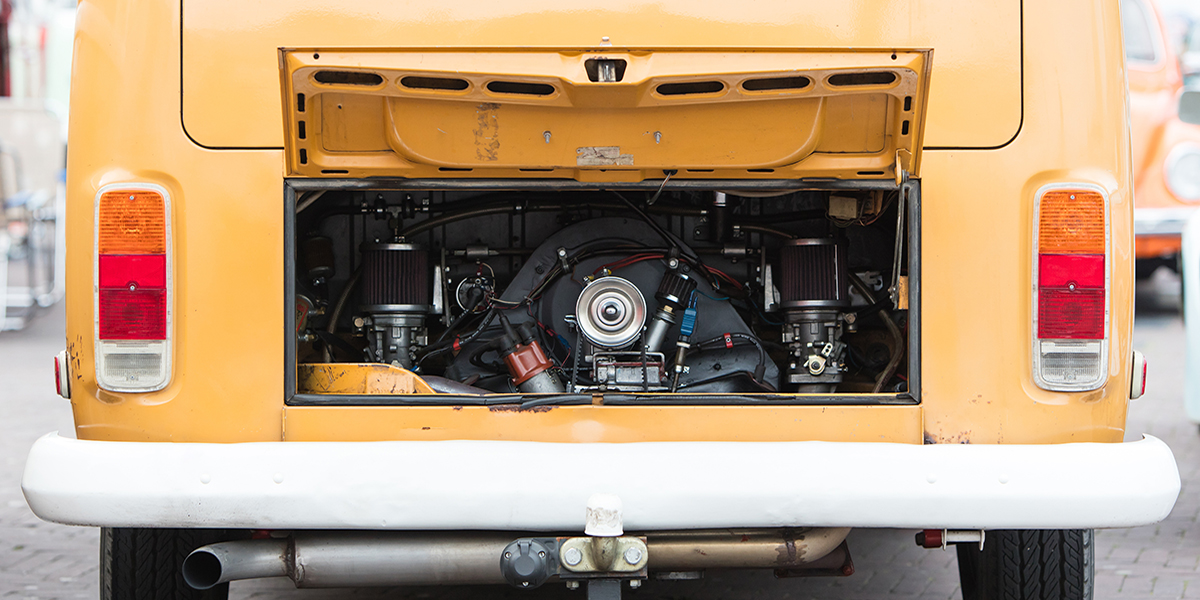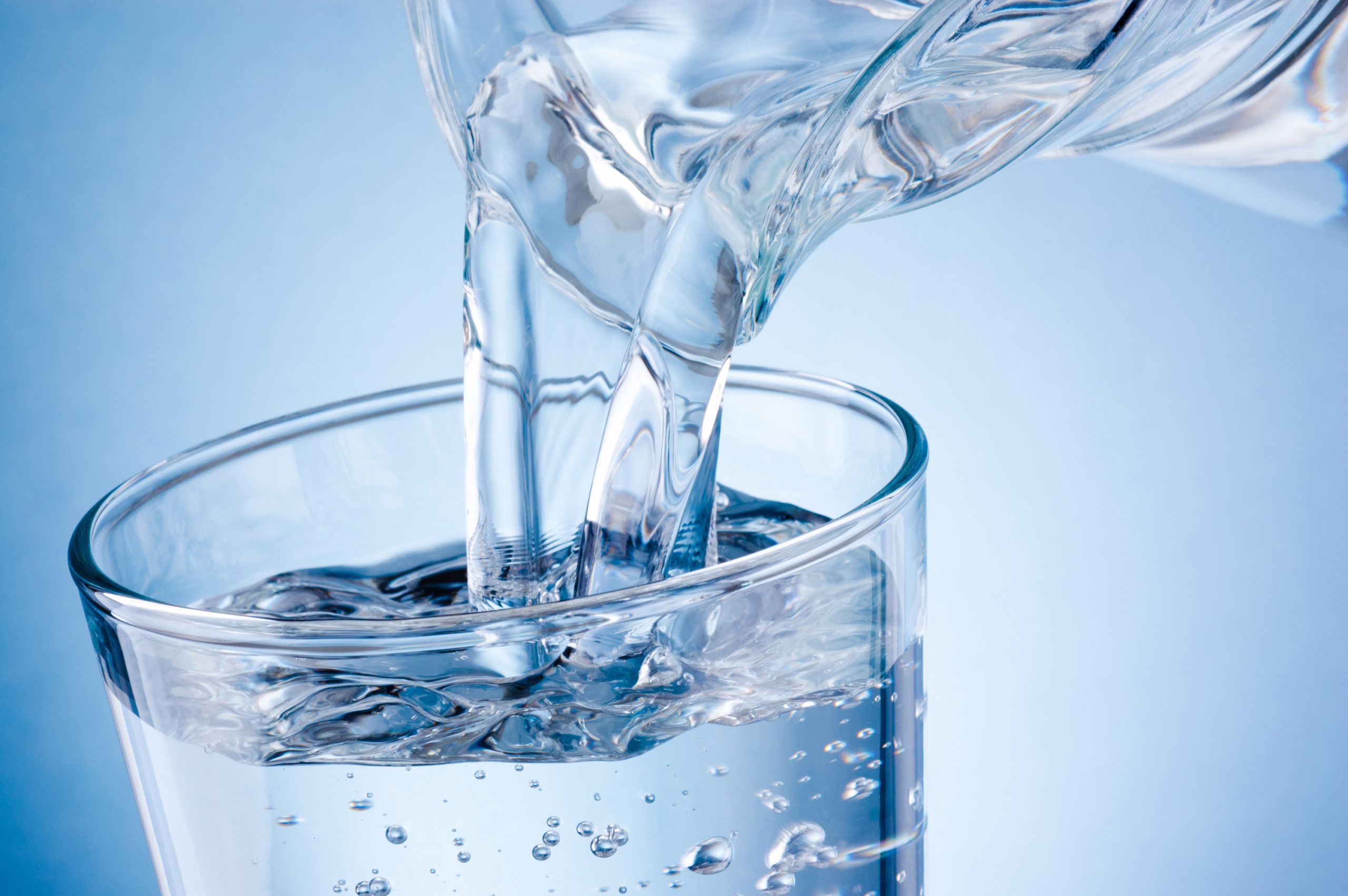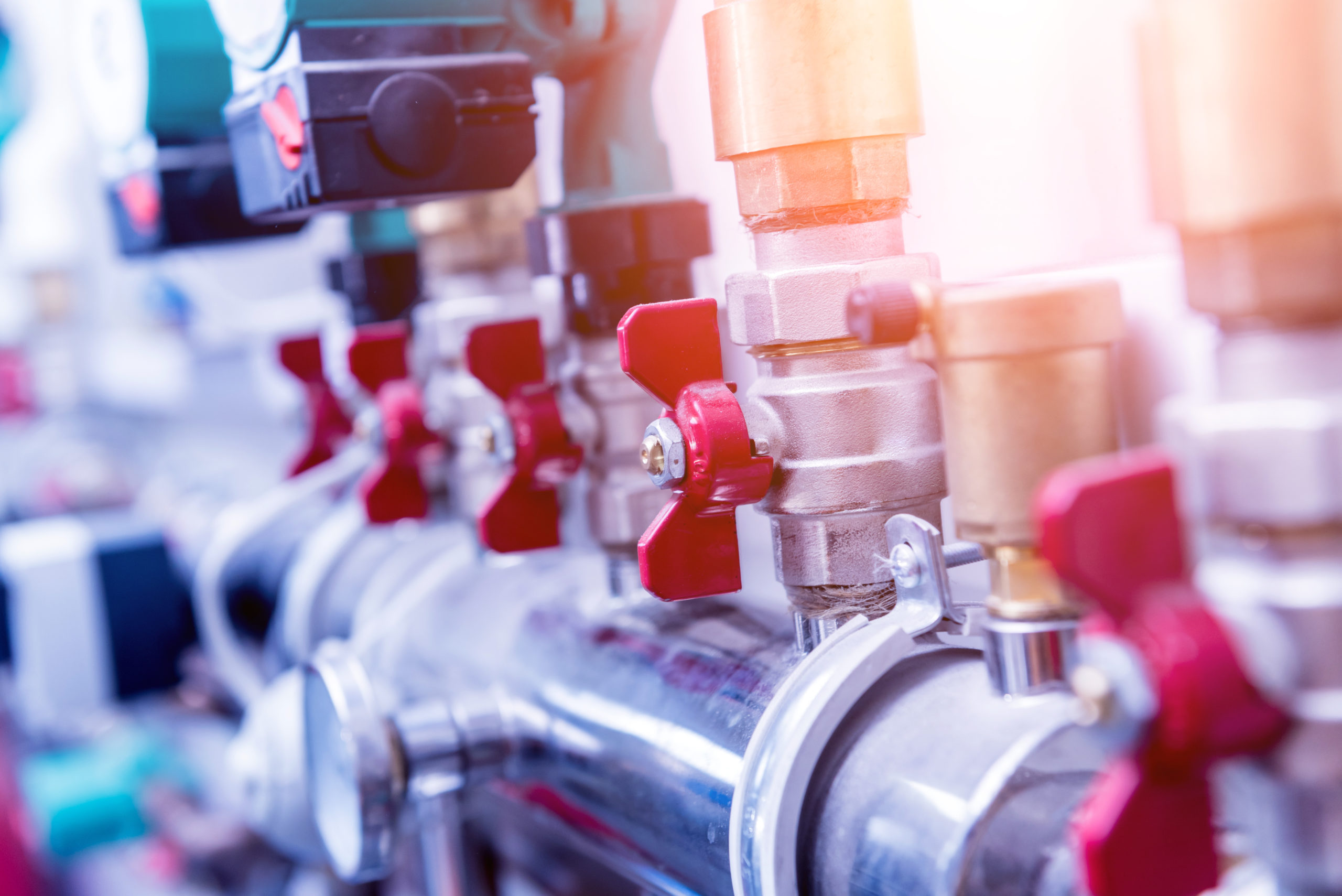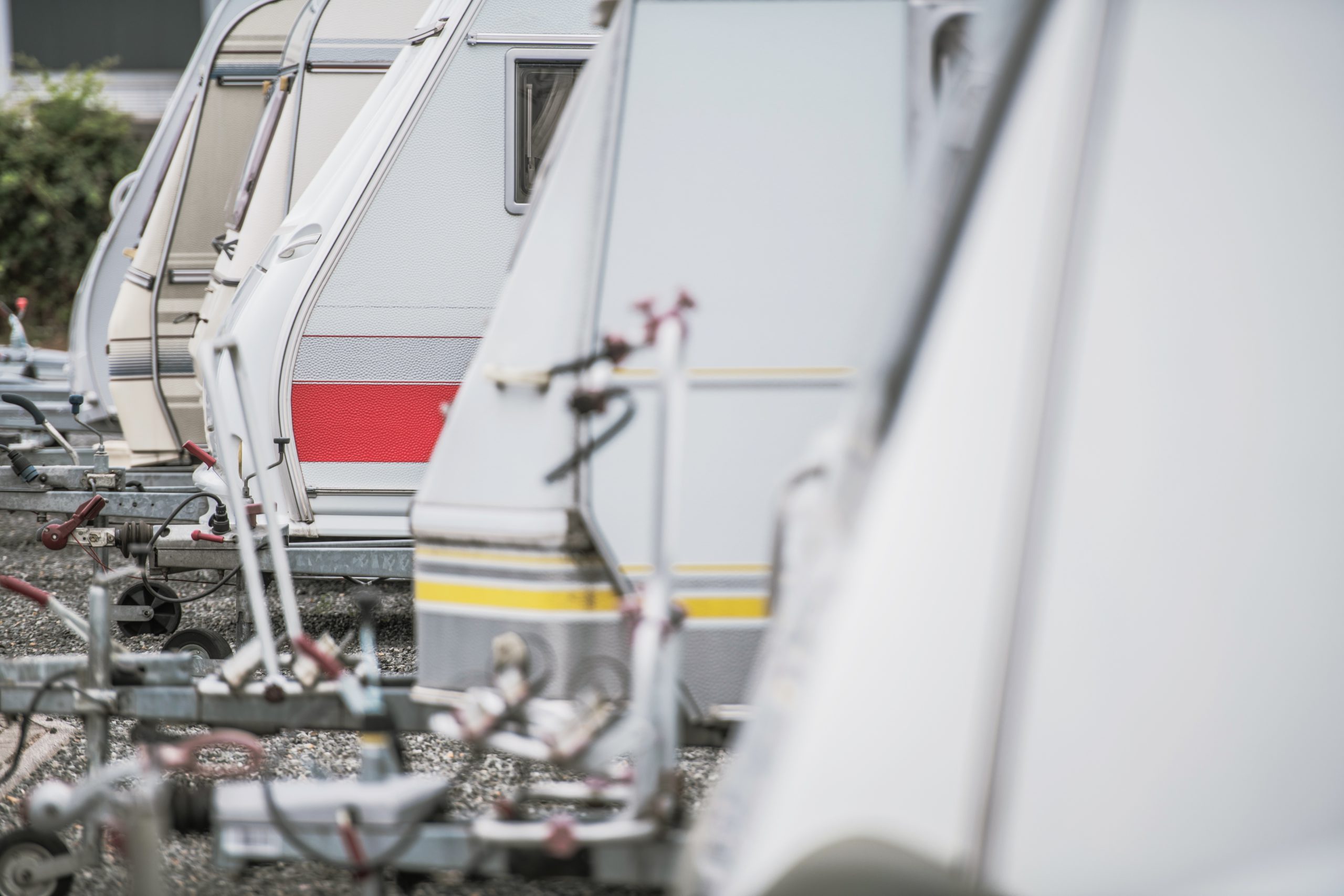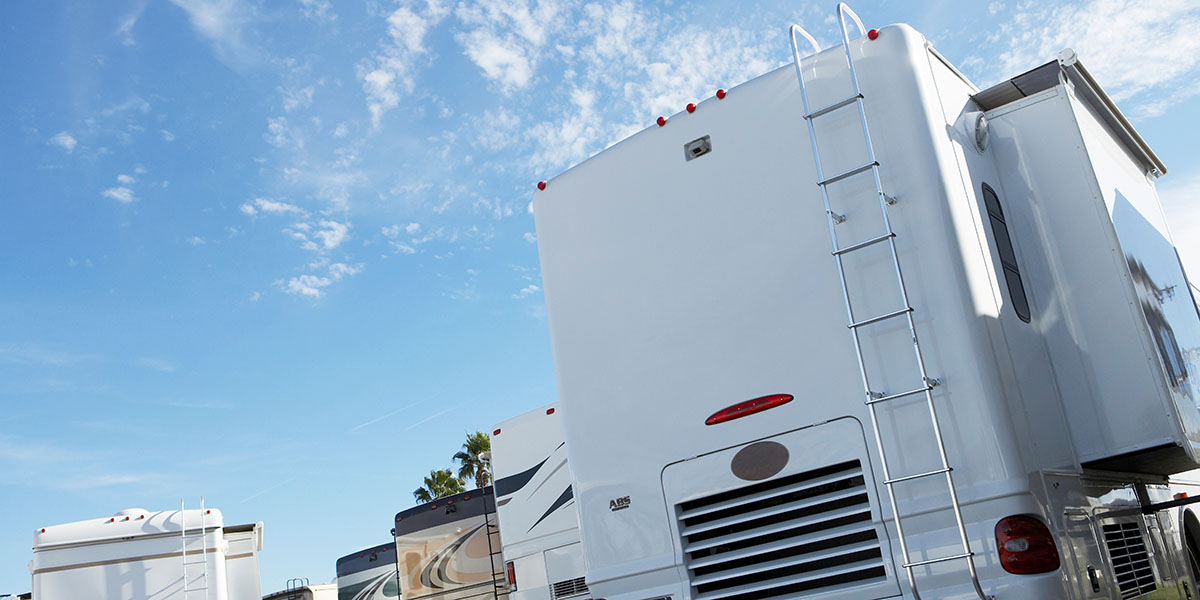Take care of your water heater and you will be sure to have a reliable supply of hot water during your travels.
Prolonged showers at home may be taken for granted. While traveling in an RV, a hot shower might involve an interesting test of timing, especially when more than one person is considered. It is truly the experienced RVer who is aware of just how long it takes four to 16 gallons of hot water to trickle down the drain, even while practicing sound water conservation.
The typical RV water heater, however, like any propane-burning appliance, requires occasional maintenance in order to maximize its potential. Fortunately, the water heater is usually easy to access, with most mandated tasks doable by most RV handypersons. The water heater is typically situated at a comfortable height, and most components are located on the outside of the RV behind a vented door. Some older models may have parts and pieces at the rear of the unit, but for the most part, newer units have their components on the exterior.
Types Of Water Heaters
The most common type of water heater found in campers today is the direct spark ignition (DSI) model. To use this fully automatic model, all an owner has to do is to make sure the heater is properly filled with water and then flip a switch. A circuit board controls all its relative functions. Since it’s the most prevalent, the DSI type will be the focus of this article.
The second most popular choice of RV builders today is the pilot-type heater. Simple in design and function, pilot-type heaters have been an RV industry mainstay for years. Even though they are less expensive than their automatic cousins, they are less popular. It appears that automation wins out over economics.
Another type of water heater is the electric-only version. Powered by 120-volt-AC electric, these units operate only when plugged into a shoreline or when onboard generator or inverter power is available. As many manufacturers of larger RVs move toward all-electric appliances, this type is sure to become more popular. They are plentiful in the marine world as well.
Most water heaters today combine propane and electric power. An electric heating element protrudes into the tank portion of the heater, which allows the RV to utilize propane while dry camping, or power the water heater with 120-volt-AC electricity while plugged in. (Quick note: if your heater is a combination gas/electric-type model, and AC electricity is available, you can quickly bring the water temperature up by operating the unit on gas and electric at the same time.) It is not advisable to install an aftermarket electric heating element designed to replace the drain plug. Use only manufacturer-approved replacement parts.
An internal heat exchanger (motor-aid) is another option offered by water heater makers. This feature allows the motorhome’s engine coolant lines to be routed through tubing inside the storage tank, thereby heating the water while the engine is running. By the time the user reaches a destination, hot water is readily available at the faucets. While this may be convenient, the maintenance factor becomes greater with motor-aid models, because the hoses periodically need to be replaced. On some of the larger Type A motorhomes, this could be an expensive, yet necessary, undertaking. Akin to some models of RV refrigerators, water heaters, too, are available using three different energy sources.
Yet another type of water heater is making a comeback in the RV industry: the weight-saving tankless heater, which is commonly called an instantaneous water heater. This design does not involve an actual storage tank. Incoming water flows through a coil that is heated by super-sized propane burners. The flame is lit only when there is a demand for water. As soon as the hot faucet is turned off, the burner goes off as well. Activation is automatic via an impeller-type switching valve.
Finally, many owners of diesel-powered motorhomes may be familiar with hydronic heating systems in which individual zones within the coach are comfort-heated independently, while at the same time domestic water is heated and delivered to all the hot faucets inside the motorhome. Since 1984, hydronic heating systems have been installed in many brands of motorhomes. Because this type of system requires specific, atypical maintenance procedures, we’ll leave hydronic heating maintenance to a future blog. Our focus here will center on the typical DSI propane RV water heater found in thousands of RVs.
Water Heater Components
Components found on every propane water heater containing its own storage tank (pilot and DSI-type) include:
- an inner storage tank
- a pressure and temperature (P&T) relief valve
- a drain plug; a main burner orifice
- a mixing tube
- the primary air adjustment.
What follows is a brief description of each of these parts and their maintenance requirements.
Storage tank
The inner tank is surrounded by insulation and typically encased with cardboard, foam, or metal. Water heaters are usually installed under a cabinet, so other than the access door, external aesthetics are not necessarily a consideration.
Flushing the tank is the main task to consider. To extend the life of the tank and to eliminate the buildup of mineral deposits inside, flush the heater at least a couple times each season. Mineral deposits settle to the bottom of the tank, so simply draining it will not completely rinse out these deposits, as the drain outlet is not positioned at the very bottom of the tank.
Pressure and temperature (P&T) relief valve
As a safety component, the P&T valve often has been viewed by RVers as an enigma of sorts. Many P&T valves have been unnecessarily replaced, deemed defective simply because they sometimes dripped water. But that is by design. Here’s why:
As any contained liquid is heated and the temperature rises, the content will expand and become pressurized. Without a means to regulate or control this expansion during the heating cycle, the unchecked pressure and temperature could eventually rupture the tank, resulting in serious injury. Water temps exceeding 210 degrees Fahrenheit are considered unsafe. Therefore, all P&T valves on today’s heaters are preset to open at 210 degrees. In the small confines of the RV water heater, the water is heated relatively quickly, so keeping up with the drastic fluctuations of both temperature and pressure is extremely important.
It is also important that a cushion of air be maintained inside the tank, above the level of the water. This air pocket acts like an accumulator during hot water delivery and also allows space for the water to expand during the heating cycle. Over time the oxygen in this air pocket is absorbed into the water, with the net result being a completely filled tank, with no void above.
At this point, there is no place for the expanding water to move into since the tank is literally full. The P&T valve then does its job — it opens. Expelling hot water from the outlet of the P&T valve allows cold water to enter the tank (thus lowering the temperature) and the relief valve closes.
P&T valves will fail over time, but, by and large, all will drip on occasion. If an adequate air cushion is maintained, the P&T relief valve should not leak. If an adequate air cushion is not maintained, then it is normal for the valve to drip water. If the valve drips or weeps during nonheating phases and the pressure within the fresh water system is regulated properly, then the relief valve may indeed be faulty.
Drain plug
All water heaters have a drain of some type. Older models incorporated an actual drain valve, while modern units use a threaded plug. Atwood (www.atwoodmobile.com) installs a plastic pipe plug. Many owners have mistakenly and inappropriately replaced the plastic plug with one made of brass. The plastic plug actually serves as a redundant safety device and should never be replaced with a metallic plug. If the plastic plug becomes damaged, always replace it with an Atwood plastic plug.
Atwood water heaters, by the way, do not require an anode, since their inner tanks are constructed of aluminum alloy. Do not cave into aftermarket attempts to sell you an anode for an Atwood water heater.
Suburban (www.rvcomfort.com) incorporates a component called an anode rod into its drain plug. Designed as a sacrificial element, the magnesium anode keeps electrolysis to a minimum and extends the life of the inner tank. All chemical and mineral reactions taking place inside the tank will attack the “weaker” molecules of the magnesium anode instead of the tank walls. Periodically, this sacrificial anode will have to be replaced. A deteriorated anode rod also may produce a less-than-favorable odor that can permeate the water system. Replace the Suburban anode rod/drain plug when it is reduced to 25 percent of its original size. On older American Appliance heaters, the anode will be accessible inside the motorhome at the rear of the heater.
Main burner orifice
The main burner orifice is threaded into the gas control valve outlet fitting. It directs a specific amount of propane into the next downstream component, the mixing tube. The orifice can be removed, soaked in acetone, allowed to air dry, and reinstalled. Never insert anything into the orifice. A simple acetone cleaning is all that is necessary to keep the gas flowing properly.
Mixing tube
The mixing tube is where the propane and the primary air are mixed just prior to combustion at the main burner. This tube, though not a precision component, must be kept clean, and more importantly, properly aligned.
As gas is projected through the main burner orifice, air is drawn in through the openings in the mixing tube. This “Venturi effect” brings in air that is needed to mix with the propane in order to have safe and complete combustion.
Make sure the mixing tube is properly centered on the main burner orifice fitting and that the alignment with the gas control valve is correct. Misalignment is one of the most common reasons for improper combustion in water heaters. The mixing tube should be in line with the flow of gas and positioned so the orifice is aimed at the direct center of the opening to the mixing tube.
This is the component that’s most prone to critter infestation, such as insect and spider nests, so make sure to check and clean it out often.
Primary air adjustment
As mentioned, the opening in the main burner orifice has a specific-size opening, so the only variable in the gas/air ratio is the amount of primary air allowed to enter. The primary air adjustment controls the volume of this incoming air.
The primary air adjustment is manipulated while the main burner flame is ignited. The flame should appear mostly blue in color with some orange or yellow tinges. Proper adjustment is attained when the flame is the correct color and also when the burner does not produce a loud, roaring flame. If you can hear the burner more than 5 feet away with the water heater door closed, chances are the mixture is incorrect and further adjustment is necessary.
In addition to the common components listed above, DSI models also incorporate a thermostat, an energy cut off (ECO) switch, a circuit board, a solenoid gas valve, and an electrode assembly.
Thermostat
Longtime coach owners might remember when all water heaters were controlled by a manually adjusted thermostat. A lever or knob was manipulated to make the water hotter or colder. With a DSI heater, adjustment of the water temperature is out of the RVer’s hands. On most units the thermostat is a preset, temperature-sensing, normally closed thermal switch that electrically turns off the heating sequence when the preset temperature has been attained. The nonadjustable thermostat is a thermal disc device secured to the front or rear of the water heater in direct contact with the inner tank. Most thermostats for DSI water heaters are preset for temperatures between 120 degrees and 140 degrees Fahrenheit. In some cases, a thermostat can be replaced with one of a higher or lower temperature rating.
ECO switch
Wired in-line between the circuit board and the gas valve, in series with the thermostat is the ECO switch. Some may contain a resettable push button; others will automatically reset once the water temperature drops below the preset temperature rating of the ECO switch. The ECO switch and the thermostat are considered high-temperature safety devices to help protect the appliance and the user. Other than keeping the wire connections clean and tight, no maintenance is required for the ECO switch or the thermostat.
Circuit board
The circuit board is the heart of any DSI appliance. Similar to a furnace board, the circuit board for a water heater energizes and opens the gas solenoid valve; creates a high-voltage spark that ignites the burner; monitors the flame sense circuit from the electrode assembly; and places the unit into lockout when it fails to detect a flame. Clean the contact strip where the multipin connector plugs in. Consider purchasing a product called DeoxIT (www.caig.com). Small amounts of corrosion, invisible to the naked eye, can prohibit proper current conduction, often resulting in strange operating characteristics. Keeping the board contacts clean and preserved will minimize or eliminate erratic operation.
Solenoid gas valve
The solenoid gas valve is controlled by the circuit board. The incoming gas tube attaches to one side of this valve while the main burner fitting and orifice are located at the other end. Energized by a 12-volt-DC electric coming from the circuit board, the gas valve will remain open as long as it is receiving voltage. The gas solenoid valve closes only under the following normal conditions: when the water temperature reaches the maximum thermostat rating; when the ECO trips and opens; and when the 12-volt-DC power supply is interrupted from the circuit board.
As with the thermostat and ECO, just keep the electrical connections on the gas valve clean, dry, and tight.
Electrode assembly
The electrode assembly receives the high-voltage output from the circuit board and creates an electrical arc to ground. At the same time, the gas and air mixture is forced to flow through this electrical arc, initiating fuel ignition at the burner. The electrode probe also “senses” the presence of the flame and sends a micro-amp signal back to the board, allowing the gas valve to remain open. If the flame is extinguished for any reason, the micro-amp circuit between the electrode and board is broken, and the board shuts off the voltage to the gas valve, thereby closing it and stopping the flow of propane.
This electrode assembly is susceptible to carbon buildup and heat stresses over a period of time. Many circuit boards have been replaced in error when the cause of an outage has simply been a dirty electrode assembly. Periodically removing the carbon deposits and brightening each electrode will help keep the heater working properly.
Carbon deposits can be cleaned off and the probes brightened with steel wool. Inspect the probes and replace the entire assembly when the probes become pitted or if a portion of the ceramic insulator is broken. Check the gap between the probes. If the electrode assembly has three probes, the gap between the spark probe and the ground probe should be half as large as the gap between the ground probe and the flame sense probe. Manipulate only the center ground probe to achieve this spacing differential. If the arc jumps from the spark probe to the flame sense probe, it will damage the circuit board, which could be an expensive consequence.
If the electrode assembly has only two probes, the gap between them should measure approximately 1/8-inch. Take care when adjusting these probes. If any portion of the ceramic insulator becomes cracked or broken, the entire electrode assembly will have to be replaced.
There are also variables outside the water heater unit that need to be maintained and monitored for optimal performance.
Battery voltage
To operate correctly, the incoming DC voltage must be maintained between 10.5 and 13.5 volts to all DSI appliances, whether on battery power or through the converter. Also, do not overlook the negative side of DC circuitry. A faulty ground connection at the water heater can cause erratic operation and outages.
Propane gas pressure
At least once each year, have a professional RV service technician measure and adjust the propane delivery line pressure, evaluate the regulator lockup pressure, and have the entire propane system checked for leaks. These tests will ensure all the propane-burning appliances are fed the proper gas pressure. Ignoring this can lead to intermittent operation, appliance failure, undetected leaks, and regulator failure. It is a safety issue.
Additional Water Heater Tips
At least once (maybe twice) during the camping season, it will be necessary to perform the described maintenance procedures on the water heater. Remember, the heater’s controls are exposed to the elements; therefore road grime, dust, and dirt have ample opportunity to gather in and around the various components. Periodically blowing the exposed areas of the water heater with compressed air will help to minimize this condition. Likewise, soot and remnants of combustion will gather in the flue portion of the heater. Blow through the flue occasionally with compressed air as well. Be sure to wear eye protection when performing this step, as flying debris will be present.
Though most RVs come from the factory outfitted with a water heater bypass kit, it is advised to install one if yours is not so equipped. Permanently attached to the rear of the water heater, the valve configuration of a bypass kit allows the water heater to be closed off from the rest of the fresh water plumbing system. This is helpful when the RV’s plumbing system is winterized and RV antifreeze is used.
Purchase a kit equipped with metallic valves. Plastic bypass valves can contribute to water heater operational issues such as intermittent hot water and low hot water pressure, among other symptoms. Brass valves will not distort with prolonged exposure to heat, and they are not prone to failure.
In addition, there might be a one-way check valve positioned at the cold inlet fitting at the rear of the water heater (there also may be one at the water heater outlet). This prevents heated water from migrating out of the heater and back into the cold water plumbing. Normally, this isn’t an issue, but if there happens to be a cold water tee plumbed into the system fairly close to the rear of the water heater, heated water can be drawn into another fixture, such as the toilet. It can be a bit unnerving to see steam rising from the toilet whenever it’s flushed. You chuckle, but it has happened!
Although a check valve has no maintenance requirements, it is mentioned in case your water heater does not have one at the cold inlet. It’s relatively easy to install, and it just may save the heater from expending unnecessary energy trying to heat water in the cold distribution piping just outside of the water heater itself.
The Wrap-Up
As with many items aboard the RV, preventive maintenance practices will not only extend the life of the water heater, but they can eliminate, or at least minimize, those pesky interruptions during excursions. As usual, if you do not feel comfortable performing any of the procedures listed here, do not attempt them. Simply call your local RV service shop. Service centers employing certified or master certified technicians stand more than ready to perform this service for you. And remember, RVing is more than a hobby; it’s a lifestyle!
How to Correctly Flush the RV Water Heater
1. Make sure all energy sources to the water heater are turned off and that the water inside the tank has cooled.
2. Turn off all sources of water pressure — the demand pump and the city water supply — and bleed off the water system pressure by opening a faucet.
3. Drain the water heater by removing the plug. To aid in draining, open all the hot faucets throughout the RV.
4. If water barely trickles out of the drain opening at this point, carefully insert a straightened coat hanger into the tank to help break up any calcified deposits. Take special care not to scrape the inner sides of the tank, or damage may result.
5. Use a water heater cleanout tool to help flush mineral deposits. When all evidence of cloudy water has been eliminated, close all the hot faucets opened earlier and turn on the city water supply or the demand pump — the higher the pressure, the better. If a pressure regulator is normally used in-line with the city connection, temporarily remove it for this step.
6. Open the pressure and temperature (P&T) relief valve and allow water to gush from the drain opening as fresh water rushes in.
7. Allow this flushing to continue for five to 10 minutes. This will remove any stagnant water along with any remaining mineral particles in the tank.
8. After about 10 minutes of flushing, turn off the water source; reinstall the drain plug; and close the P&T valve by allowing the lever to snap shut.
9. Turn on a water pressure source once again and open all the hot water faucets inside the coach until water flows freely from all hot faucets. This will automatically fill the water heater and eliminate air pockets in the distribution system.
10. Finally, turn off the water source but leave the hot faucets open. Then open the P&T relief valve once again to release any water at the top of the tank. This establishes that needed cushion of air on top of the water. Remember, this air gap is necessary so the heated water will have room to expand. When water stops dripping from the P&T valve, close the hot faucets inside the motorhome and the P&T valve. The heater is now ready for operation.
FMCA RV Club brings you this monthly tech tip to Enhance Your RV Lifestyle. FMCA delivers RV know-how to its members. Learn more at FMCA.com.
This information is for educational purposes. FMCA shall not be responsible nor retain liability for RVer’s use of the provided information. Prior to making any RV service decision, you are advised to consult with an RV professional.
